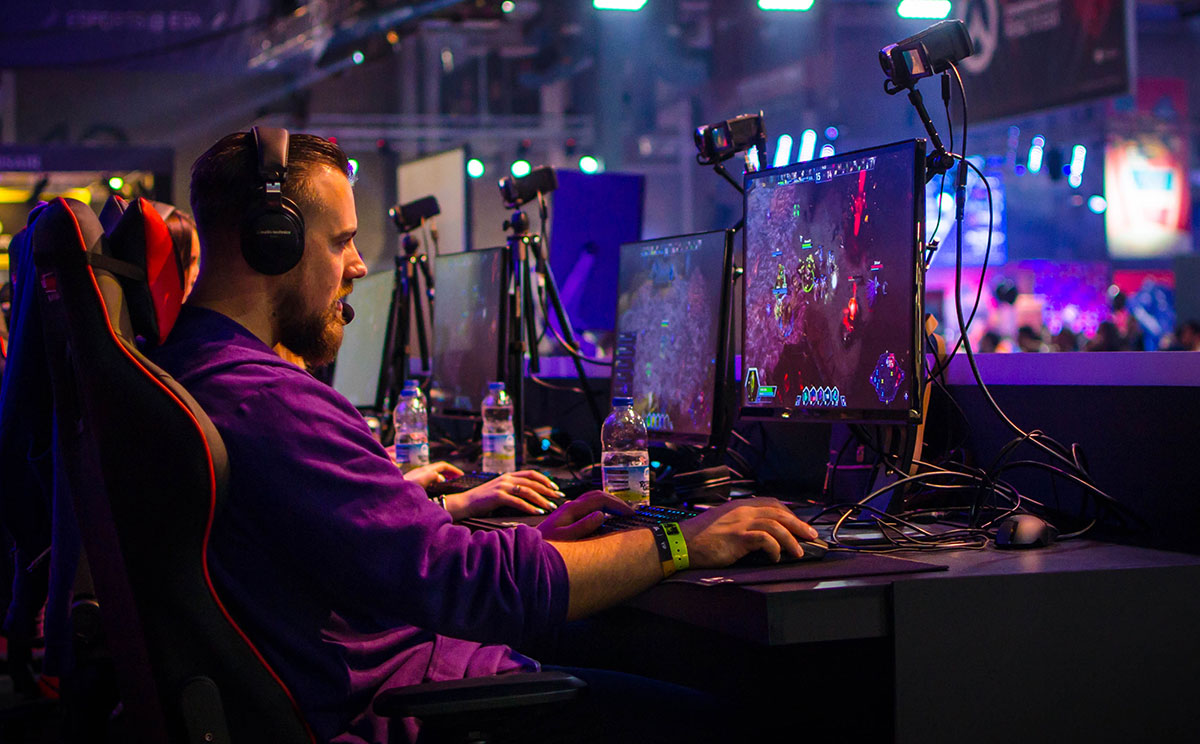 |
  
|
Video Games and ViolenceData does not support the popular belief that video games promote violent behavior. Skeptoid Podcast #690  by Brian Dunning Today we're going to take a long look at a subject that has been appearing in the news almost for as long as video games have existed: the question of whether or not playing violent video games leads to violent behavior in real life. The belief has already led to ratings on video games that imply a negative impact from playing them; all-out bans on violent video games appear on ballots every year; major retailers like Wal-Mart have removed displays and signs for the games, while other retailers restrict their sale to customers below certain ages. Everywhere we turn, the belief that violent video games cause real-life violence impact gamers and the gaming industry. We're going to have a look at what the science says. To today's older generation — Baby Boomers and Generation X who grew up jumping Schwinn Stingrays off plywood ramps in the middle of the street (in other words, me) — the behavior of Generation Z (those too young to remember 9/11) seems alien. Older folks grew up before smartphones existed and video games were rudimentary novelties, whereas their children grew up never knowing anything but smartphones and social media. To us, their behavior seems incomprehensible and unnatural; to them, our behavior seems incomprehensible and unnatural. It is perfectly normal for either generation to fear that something is not right with the other generation's behavior, as it represents a type of social interaction that is dramatically different. This phenomenon is not limited to the current generation. Twenty years ago, kids were playing the original first-person shooter games and other role playing video games, often for hours and sometimes for days, a type of behavior that was completely foreign to their parents who'd had nothing even remotely like a video game when they were that age. So it should not surprise us that the default reaction of today's parents, or any parents in recent generations — independent of any science or studies — is to suspect that some of our children's behavior is deviant, and therefore very likely the cause of whatever problems they might be having. This is how our pattern-seeking brains work. They weave anecdotes together into a bite-sized narrative that seems logical and confirms our suspicions. The surprise shouldn't be that despite data to the contrary, some people think violent video games drive violent behavior, and gaming is an addiction requiring treatment; rather, the real surprise would be if those beliefs didn't exist. For a long time, the standard answer to this question coming from the scientific skepticism community has been that the science is clear that violent video games do not make kids more violent or aggressive in real life. And while this may well be a defensible position, my experience of trawling through the literature on this question is that the literature is absolutely, positively not clear on this. Rarely have I encountered a topic on which the literature is more contentious. Early on in the research for this episode I discovered that selecting references was going to be a problem. Normally on a subject I can say "This large authoritative study found X, and the consensus agrees," but in this case, many of the most prominent papers disagree, and each is followed by boatloads of letters and dissents. I would have had to step into the role of gatekeeper to select specific references and present them as authoritative, which I'm not qualified to do. From my survey, it appears to me that the literature falls into three camps: first, that violent video games do increase violence or aggressive behavior in kids who play them; second, that they don't; and third, which is the largest camp, is a more nuanced view, and is the closest thing to what I'd describe as a consensus. To understand this more nuanced view, let's first look at perhaps the most impactful publication on the subject. It's the 2015 Resolution on Violent Video Games by the American Psychological Association. It's widely cited, and being the APA's official position paper, wields maximum authority in the eyes of the media. It asserts both that violent video games increase aggressive behavior and decrease prosocial behavior. However, the resolution carefully discriminates between aggression and violence:
The popular press, however, has scarcely comprehended this difference, and what's happened is that this single publication has been waved as proof positive by both sides that their perspective is the supported one. One side has mischaracterized it (and cartoonishly oversimplified it) into "playing violent video games turns kids into killers." The other side has trumpeted it as affirmation that no good data supports the claim that violent video games correlate with violent behavior, which is indeed what it actually says. Media abuse of the 2015 Resolution was so rampant that two years later, in 2017, one of the APA's 54 divisions — the Society for Media Psychology and Technology — published a clarifying statement that limited its discussion to societal violence; most specifically, mass shootings, which was where the media best loved to heap its blame of violent video games. The statement concluded:
Notably, the paper even mentioned the generational problem we discussed earlier:
Really what we have here is an attempt to blame a certain unfamiliar, unpredicted behavior (the act of violence) on another unfamiliar yet observed behavior (the playing of violent video games). When confronted with something that's hard to account for, like an act of great violence, our natural human tendency is to somehow rationalize it by seeking identifiable patterns that can at least appear to explain it. When a young person does something deviant, our native pattern-matching tendency is to look for something else deviant which explains it. The division then laid out a set of recommendations which were better tweaked than those given in the APA's original 2015 paper, given all the media misunderstanding that had taken place in the intervening two years.
...it said, and its recommendations were for the media to more properly use some terms and avoid other things altogether. Its final recommendation #6 was:
So let's return to the difference between aggression and violence, a difference which may seem insignificant to many laypeople. But to the researchers writing these papers, the difference is a huge one. It was explained in the division's 2017 statement:
Being an aggressive soccer forward is hardly the same as being a mass shooter — which is a point that one would think shouldn't need to be made; but it's a point that the news media gets wrong nearly every time they report on this subject. But moreover, aggression is pretty broad and widely found among the general population. Aggression has many causes such as family history and mental health. Consumption of violent media is also widely found among the general population, almost always with no ill effects; so even this connection is a tenuous one. So let us conclude by summarizing three key ideas that convey the closest thing we have to a scientific consensus on these questions:
That's what we know, and it's a far cry from what's usually reported. Every time there is a highly publicized act of violence, you can practically bet that some reporter will dig up the fact that the perpetrator had played violent video games. Don't stand for it. Go to the comments section and set them straight on the science, you can grab references from the bottom of this page. Remember: to form the best solution to a problem, we need to have an accurate understanding of the problem. Sensational explanations may sell newspapers, but they don't save lives.
Cite this article:
©2025 Skeptoid Media, Inc. All Rights Reserved. |